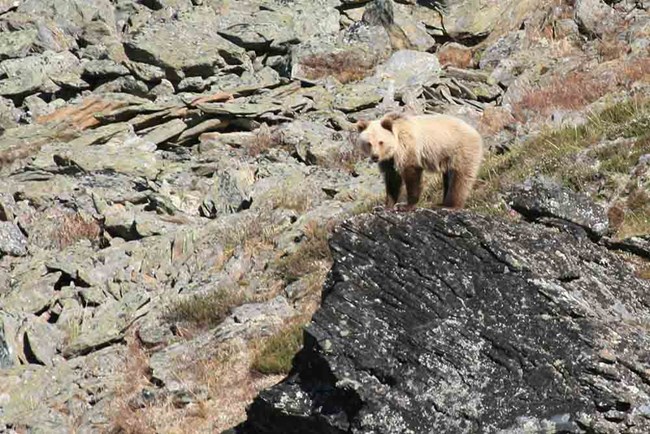Last updated: October 24, 2020
Article
Alaska brown bears exposure to bacterial, viral, and parasitic pathogens

NPS/Kyle Joly
A recent study found evidence that bears from five locations throughout Alaska have been exposed to numerous pathogens (infectious agents that can cause disease). These pathogens are linked to previously documented bear deaths and some may potentially infect humans. Evidence of exposure to the pathogens varied across locations, from year to year, and with the bear’s age. In the study recently published in the Journal of Wildlife Diseases, scientists from the U.S. Geological Survey Alaska Science Center, National Park Service, other federal and state agencies, and the University of Georgia assessed prior exposure of Alaska brown bears to a suite of bacterial, viral, and parasitic pathogens. Information on the exposure of bears to pathogens may be useful for making informed management decisions for declining bear populations or those of conservation concern and in developing recommendations for the public regarding safe processing, handling, and consumption of harvested animals.
Exposure of Alaska brown bears (Ursos arctos) to bacterial, viral, and parsitic agents varies spatiotemporally and may be influenced by age
Abstract
We collected blood and serum from 155 brown bears (Ursus arctos) inhabiting five locations in Alaska during 2013–16 and tested samples for evidence of prior exposure to a suite of bacterial, viral, and parasitic agents. Antibody seroprevalence among Alaska brown bears was estimated to be 15% for Brucella spp., 10% for Francisella tularensis, 7% for Leptospira spp., 18% for canine adenovirus type 1 (CAV-1), 5% for canine distemper virus (CDV), 5% for canine parvovirus, 5% for influenza A virus (IAV), and 44% for Toxoplasma gondii. No samples were seropositive for antibodies to Trichinella spp. Point estimates of prior exposure to pathogens among brown bears at previously unsampled locations generally fell within the range of estimates for previously or contemporaneously sampled bears in Alaska. Statistical support was found for variation in antibody seroprevalence among bears by location or age cohort for CAV-1, CDV, IAV, and Toxoplasma gondii. There was limited concordance in comparisons between our results and previous serosurveys regarding spatial and age-related trends in antibody seroprevalence among Alaska brown bears suggestive of temporal variation. However, we found evidence that the seroprevalence of CAV-1 antibodies is consistently high in bears inhabiting SW Alaska and the cumulative probability of exposure may increase with age. We found evidence for seroconversion or seroreversion to six different infectious agents in one or more bears. Results of this study increase our collective understanding of disease risk to both Alaska brown bear populations and humans that utilize this resource.
Ramey, A. M., C. A. Cleveland, G. V. Hilderbrand, K. Joly, D. D. Gustine, B. Mangipane, W. B. Leacock, A. P. Crupi, D. E. Hill, J. P. Dubey, and M. J. Yabsley. 2017. Exposure of Alaska brown bears (Ursus arctos) to bacterial, viral, and parasitic agents varies spatiotemporally and may be influenced by age. Journal of Wildlife Diseases doi: 10.7589/2018-07-173
